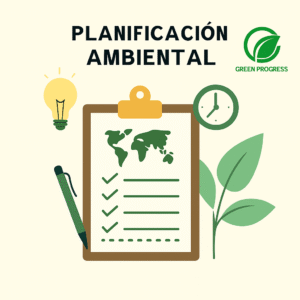The concept of a water footprint has become increasingly relevant as nations face growing water scarcity, climate change pressures, and sustainability challenges. According to global studies, nearly two-thirds of the world’s population could face water stress in the coming decades. By understanding our water footprint, both individuals and organizations can take informed actions to reduce their impact and secure water for future generations.
In this article, we’ll explore what a water footprint is, how it is measured, the work of the Waterfootprint Network, and why it matters for consumers, businesses, and policymakers alike.
What is a Water Footprint and How is it Measured?
The water footprint is a measure of the total volume of freshwater used directly and indirectly to produce goods and services consumed by an individual, community, business, or country. Introduced by Professor Arjen Hoekstra in 2002, the term expanded the concept of water use beyond household consumption to include supply chains and trade flows.
Unlike simple water consumption data, the water footprint offers a comprehensive view of water use by considering three critical elements:
- Direct water use – such as drinking, cooking, and household activities.
- Indirect water use – embedded in products like food, textiles, and energy.
- Virtual water flows – the hidden water used in trade when products are imported or exported.
The methodology typically involves:
- Identifying the product or service (e.g., a cup of coffee).
- Tracing the supply chain to calculate water used in production.
- Distinguishing between types of water (blue, green, grey).
- Accounting for regional water stress, since water scarcity varies greatly across countries.
By combining these elements, the water footprint provides a quantitative tool for sustainability. Governments, businesses, and researchers use it to analyze where water risks are most severe and how policies can be improved.
Types of Water Footprint: Blue, Green, and Grey
One of the most influential contributions of the Waterfootprint Network has been standardizing the three main categories of water footprint:
- Blue Water Footprint
Refers to the consumption of surface and groundwater resources. Examples include irrigation for agriculture, industrial water withdrawals, and domestic uses. Excessive blue water use can lead to depleted rivers, shrinking lakes, and aquifer overextraction. - Green Water Footprint
Represents rainwater stored in the soil and used by plants. It is critical in agriculture, particularly in rain-fed crops. Green water is renewable, but its efficiency depends on land management and climate conditions. - Grey Water Footprint
Refers to the volume of freshwater required to assimilate pollutants and maintain water quality standards. It highlights the pollution dimension of water use, especially from industrial discharge, pesticides, and fertilizers.
These three categories provide a holistic framework for assessing water sustainability. For example, the water footprint of a cotton T-shirt may include green water from rainfall, blue water from irrigation, and grey water due to pesticides used during cultivation.
The Role of the Water Footprint Network in Global Research
The Waterfootprint Network is the leading global platform dedicated to advancing knowledge, standards, and awareness about water footprints. Founded in 2008, it unites researchers, NGOs, corporations, and governments to share methodologies and data.
Its contributions include:
- Establishing calculation standards for water footprint assessment.
- Publishing global datasets on water use by country, product, and industry.
- Promoting water stewardship through education, workshops, and corporate partnerships.
- Supporting policymakers with insights into water scarcity hotspots.
Thanks to the Waterfootprint Network, the concept has moved from academia into the mainstream, influencing corporate sustainability strategies and international policy debates.
Practical Examples: How Much Water is Behind What We Consume?
The numbers behind water footprints are often surprising:
- 1 cup of coffee: ~140 liters of water (mostly for growing coffee beans).
- 1 kilogram of beef: ~15,000 liters of water (due to animal feed, drinking water, and processing).
- 1 cotton T-shirt: ~2,700 liters of water.
- 1 liter of soda: ~170 liters of water.
These figures illustrate the concept of virtual water, showing how much water is “embedded” in the products we use daily. Importantly, water footprints vary significantly by region. Producing rice in a water-abundant area has a different impact than producing it in a drought-prone region.
This demonstrates why water footprint analysis is not just about numbers, but also about context and location-specific sustainability.
Water Footprint and Sustainability: Environmental and Social Impacts
Water footprints highlight the deep connection between consumption, production, and global ecosystems. The sustainability implications include:
- Environmental impact: Overuse of blue water leads to shrinking rivers and aquifers; high grey water increases pollution in rivers and lakes.
- Social equity: Water competition can exacerbate inequality, particularly in regions where agriculture, industry, and households compete for limited resources.
- Global trade: Virtual water flows mean that water-scarce countries often import products with high water footprints, transferring water stress to exporting countries.
Understanding water footprints is therefore essential for building resilient food systems, sustainable industries, and fair water policies.
Corporate and Government Responsibility in Water Footprint Management
Companies and governments play a critical role in managing water footprints:
- Businesses: Multinationals are increasingly measuring and reducing their water footprints as part of ESG (Environmental, Social, Governance) reporting. For example, food and beverage companies work to optimize irrigation, reduce pollution, and improve supply chain efficiency.
- Governments: Policies can incentivize water-efficient crops, regulate pollution, and enforce reporting standards. International cooperation is vital, given that 70% of water use is linked to agriculture, often traded globally.
By adopting water footprint analysis, both corporations and policymakers can address water risks proactively and align with global sustainability goals.
Criticism and Limitations of the Water Footprint Concept
While powerful, the water footprint concept is not without criticisms:
- It simplifies complex hydrological processes into a single metric.
- It may overlook local ecological and social contexts.
- Data accuracy depends heavily on assumptions in supply chains.
- Critics argue it sometimes lacks actionable guidance for decision-making.
Despite these limitations, the water footprint remains a valuable awareness and policy tool, especially when combined with broader sustainability frameworks.
Future Trends: Innovation, Technology, and Water Governance
Looking ahead, water footprint research and practice are evolving rapidly:
- Technology: AI, satellite imagery, and IoT are enabling more precise water use monitoring.
- Corporate reporting: Water footprint metrics are increasingly tied to ESG and carbon disclosure platforms.
- Policy innovation: Countries are adopting stricter water use regulations and integrating water footprints into climate strategies.
- Consumer awareness: As labeling expands, shoppers may soon see water footprint scores on products, just like carbon footprints today.
The future of sustainability will hinge on integrating water footprints into daily choices, corporate practices, and government agendas.
Water Footprint as a Tool for a Sustainable Future
The water footprint is more than a number it is a powerful framework for understanding the hidden flows of freshwater that sustain our world. From the coffee we drink to the clothes we wear, every choice carries a water cost.
The work of the Waterfootprint Network, along with corporate and governmental initiatives, continues to make the concept central to global sustainability debates. While the methodology has its challenges, the water footprint remains one of the most effective ways to link consumption patterns with water stewardship.
By making conscious decisions, supporting responsible companies, and encouraging smarter policies, we can ensure that our collective water footprint moves toward sustainability, protecting one of humanity’s most precious resources.









